Бұл мақала ерте кезеңдегі көшпенділердің аң стилін білім беру үдерісіне енгізудің теориялық және әдістемелік негіздерін талдайды. Зерттеу материалдары ретінде Орталық Азиядағы ерте темір дәуірі ескерткіштерінен табылған зооморфты бейнелер, музейлік жинақтар мен классикалық еңбектер қамтиды. Авторлар заманауи цифрлық технологиялардың білім беру жүйесіне ықпалын, артықшылықтары мен кемшіліктерін жан-жақты талдай отырып, электрондық оқытудың мүмкіндіктері мен шектеулерін сипаттайды. Білім беру процесін цифрландырудың негізгі аспектілері ретінде оқу материалдарының электронды форматқа көшуі, интерактивті ортаның дамуы, оқыту құралдарының жаңа түрлері және жасанды интеллектті пайдалану мүмкіндіктері атап өтілген. Сонымен қатар, цифрлық білім беру жүйесіндегі өзекті мәселелер – дәстүрлі білім беруге еліктеу, сапаны бақылаудың әлсіздігі, интерактивтіліктің төмендігі, әлеуметтенудің жеткіліксіздігі және жасырын білім берудің қиындығы сараланады. Мақалада Қазақстанда білім беруді цифрландыру үдерісінің жаһандық білім беру кеңістігіндегі орнын анықтау, оның бәсекеге қабілеттілігін арттыру жолдары қарастырылады. Цифрлық трансформация жағдайында білім беру ұйымдарына заманауи талаптарға сай бейімделу қажеттілігі ерекше атап өтіледі. Сондай-ақ виртуалды музейлер, интерактивті карталар, жобалық оқыту сияқты шешімдер арқылы аң стилін оқыту тарихи-мәдени сананы, зерттеушілік және сыни ойлау дағдыларын дамытуға мүмкіндік беретіні көрсетіледі.
ЕРТЕ КӨШПЕНДІЛЕРДІҢ АҢ СТИЛІ: БІЛІМ БЕРУ БАРЫСЫНДАҒЫ ЗАМАНАУИ МӘСЕЛЕЛЕР
Жарияланған September 2025
![]() 7
7
![]() 3
3
Аңдатпа
Тіл
Қазақ
Кілтті сөздер
тарих, цифрлық технология, аң стилі, зооморфты бейнелер, темір дәуірі, археологиялық қазба жұмыстары.
Дәйексөздерді қалай жазу керек
[1]
Касенова А.Д. і Қалыбай М.Ә. 2025. ЕРТЕ КӨШПЕНДІЛЕРДІҢ АҢ СТИЛІ: БІЛІМ БЕРУ БАРЫСЫНДАҒЫ ЗАМАНАУИ МӘСЕЛЕЛЕР. Абай атындағы ҚазҰПУ Хабаршысы. Тарих және саяси-әлеуметтік ғылымдар сериясы. 3, 86 (Вер 2025). DOI:https://doi.org/10.51889/2959-6017.2025.86.3.019.

